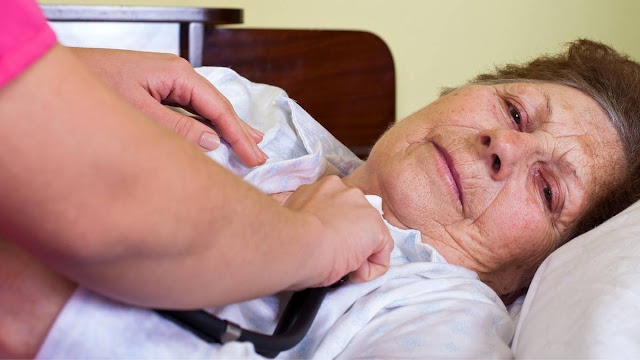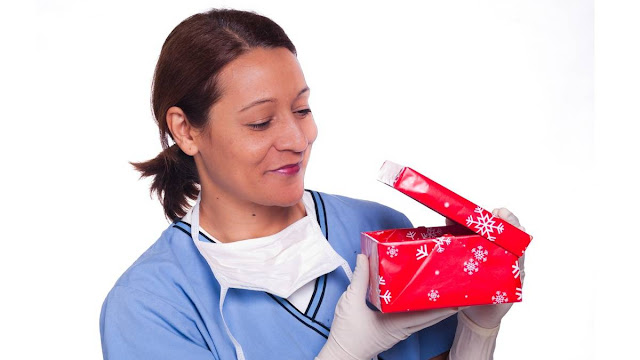The saying “a change is as good as a rest” holds true—particularly for nurses still grinding away in the trenches through the 4th wave of the Covid-19 pandemic.
Before you find yourself so burnt out from work, you wonder how (or if) you’ll ever recover, it’s probably a good sign you need to look for a different job as soon as possible.
And while you may be thinking “Better the devil I know than the one I don’t” in terms of switching jobs and maybe landing in a tougher job than you have now, we’ve put together this article to help you find a nursing job you love that will also show you some love in return.
12 tell-tale signs it’s time to look for another nursing job:
1. Quick nurse turnaround with your employer
2. Ongoing bullying
3. Your health is suffering (mentally and/or physically)
4. Lack of satisfaction with your job
5. Recurring or ongoing anxiety and/or depression
6. Struggling with compassion fatigue
7. Poor nursing leadership
8. Patient safety is at risk
9. You’re being asked to work outside your scope of practice
10. Your license is at risk
11. Patient care is disorganized
12. Patients are being abused (report this before you leave!)
Some other red flags that should be waving you toward another nursing job include:
◉ You frequently complain about work
◉ You have trouble waking up for work or dread it
◉ You’re drinking more alcohol or using substances to cope
◉ You often think, dream, or talk about doing something else
◉ You have trouble sleeping—falling asleep or staying asleep
◉ You’re having more conflict with your co-workers than usual
Once you’ve decided it’s time to pack up your stethoscope and move on, it’s important to make sure you find a job you truly love waking up to each day— or at least like going to.
Before you pull the plug on your current job, take some time to make a list of what’s important to you in your next nursing job. And don’t be afraid to dream! Remember: You don’t get what you don’t ask (or look!) for.
Write down all the things that would make your next job ideal.
8 things to think about in an ideal job:
1. How much money do you want or need to make?
2. What kind of nursing role do you want to fill?
3. Do you want to get out of shift work or work at the bedside?
4. How far do you want to commute to work? Or would you prefer a remote work at home job?
5. What kinds of employer benefits do you want?
6. Is it important to find a family-friendly employer (yes! It’s possible. Keep reading!)?
7. If you need more education to land your dream job, is it time to start hunting for a nursing program (there are lots of online programs for busy working nurses)?
8. Can you find a nurse who is doing the job you want to do? Tell them you would love to buy them coffee or chat over Zoom because you would love to do what they’re doing and want to learn more about it.
Once you find a potential new job, it’s time to become a detective and do some serious sleuthing to find out all the details.
Besides chatting with a nurse who works with your potential new employer as suggested above, go check out the place where you’d be working. What kind of vibe do you get when you walk in the door? How do the staff seem to be working together? Can you identify any nursing leaders and are they present and supporting their staff? Are the hallways clear, clean and free of bad odors? Peek in some patient rooms. Are they bright, airy and orderly or dingy with stuff strewn everywhere?
Some other important things to find out include the employer’s reputation and if they’re trustworthy, does the employer offer work-life balance benefits such as nutrition consultations, employee and family assistance programs, stress management workshops, grievance counseling, and financial planning help to name a few.
It’s also critical to learn if nursing leaders are a key part of the leadership and decision-making team which is a key requirement of Magnet hospitals. Finally, does the employer have a good relationship with its employees—do they genuinely care about their staff and is that care and concern felt by the staff who work there?
Is it really possible for nurses to find family-friendly workplaces?
Yes, it is!—even if you work shift work as a nurse. The important thing to keep in mind is that the term “family-friendly” can mean different things to different people. Take some time to think about what this means to you. And what you’re willing to give up in return.
Having lots of work flexibility so you can meet the needs of your family is great but it might mean sacrificing other benefits including paid time off and regular work you can depend on for a paycheck. Keep in mind a salaried position may be more desirable if you’re looking for flexibility in work hours because you won’t be paid just for actual hours worked.
Are you looking for on-site child care? Maybe paid mental health days and paid time off so you can take a sick child or ailing family member to the doctor? Or do you need a flexible work schedule so you can work around the more fixed schedules of your children? Would you prefer to work remotely if possible? Is maternal or paternal leave important to you?
Also, don’t be afraid to ask for benefits that may not yet exist with the employer. The nursing shortage and pandemic has prompted employers to rethink what they need to do to retain nurses. This includes thinking outside the box in terms of nontraditional benefits such as surrogate-support and fertility programs as this job-seeker asked for—and got!—as part of her new job.
What clues can I look for that might suggest a workplace is family-friendly?
Look for keywords on the company website and listen for keywords during the interview that the employer uses to describe themselves such as “compassionate”, “family-oriented”, “work-life balance”, and “mental health”.
A search of the best places to work online is another great way to find family-friendly workplaces based on reviews of current and former employees. Doing an online search for companies that have won awards for “best place to work” and “family-friendly” company or business can also help you find these gems.
How do I know when I should turn down a job offer?
Just because you got a job offer doesn’t mean you should take it. Nursing jobs are plentiful and new opportunities come up every day. If you made it to the stage of getting a job offer, you’ve hopefully had an interview and had a chance to do your homework about the employer. Nevertheless, some real deal-breakers can pop up during or after the interview that should make you rethink working for an organization.
7 Red Flags To Look For During an Interview
1. Distracted, unengaged, or conflicting interviewers
If during your interview the interviewer is distracted checking their phone or emails often, or if there’s more than one interviewer and they don’t agree on what they’re expecting of you as an employee, cross that one off the list. This shows poor leadership and interpersonal skills not to mention conflicting expectations that will be sure to frustrate you as an employee. And if the interviewers give you very different answers to your questions, this lack of consensus shows it may be difficult to meet employer expectations because even the interviewers don’t agree on employee expectations.
2. Lack of workplace diversity
During your interview, ask about the employer's stance on diversity, equity, and inclusion (DEI) in the workplace. Ask if this is one of their corporate values and if so, how they promote and incorporate that value in the workplace. Ask for examples of what makes their workplace diverse and what they’re currently doing to increase and encourage diversity in their staff.
3. Employer rigidity
Another red flag can be a rigid employer. For example, if there’s no indication from the employer that they’re willing to help accommodate your need to manage family responsibilities such as caring for aging or ill family members or if you’re presented with a job offer without any discussion about what you’re looking for, you’re likely dealing with an employer who is only thinking of their own needs.
4. High staff turnover
During the interview, or sooner if possible, you want to find out how long the position you’re applying for has been vacant and why. If an employer has high staff turnover, it’s usually an indication that staff aren’t happy for some reason and choose to leave. Keep in mind that a large sign-on bonus will quickly pale as an incentive if you dread going to work each day. And large sign-on bonuses can be an indication of high staff turnover or an inability to attract staff.
5. No room for career growth
According to Fast Company, a recent Monster survey during the pandemic shows “the top two reasons people are looking for new jobs are burnout and lack of job growth or opportunities.”
Employers should be identifying opportunities for career growth and advancement with their organization during the interview to entice and attract good employees to hire on and stay with the company. If an employer can’t describe what career advancement opportunities they can offer you—or you have to ask about this in the interview and they don’t have a good answer, it’s probably time to keep looking.
6. Pressure to accept a job offer quickly
Desperation is never a good bedfellow. If you’re pressured to make a decision about a job offer in a day or less—or even following an interview—be sure to put the brakes on and ask for more time to evaluate the job offer.
Keep in mind job offers are a two-way street and employers need you as much as you need the job. Take some time to reflect on the job interview and discuss it with someone you respect. Ultimately, trust your gut feeling and don’t be afraid to decline the offer if something doesn’t “feel” right—even if you can’t put your finger on it.
7. No staff retention strategy
Lastly, let’s circle back to that big fat sign-on bonus the employer may be dangling in front of you…that’s a sweet incentive to start a new job. But, arguably, a more important question is, what is the employer doing to keep the great staff they already have? Remember—this will include you soon if you accept the job. This is a crucial question to ask in the interview. Employers who stumble to answer this are not places where you’re likely to be happy working for very long. Time to keep looking.
Source: nurse.org

















